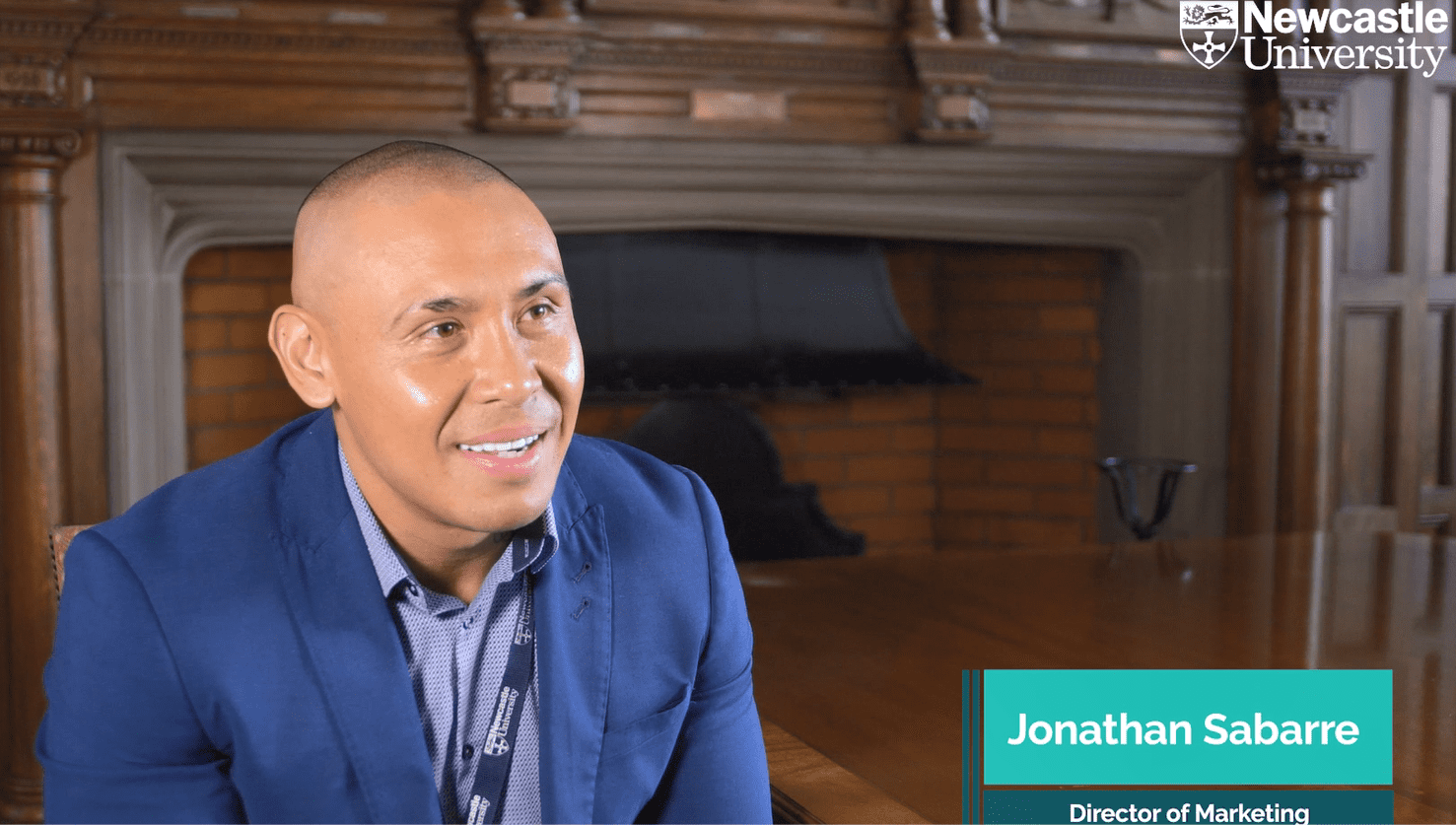Jonathan Sabarre, Director of Marketing at Newcastle University, discusses the importance of collaboration in designing the university’s first Essential Marketing Strategy.

The importance of a unified brand vision and marketing strategy has arguably never been more significant. As we are all too aware, the turbulent economic outlook and emerging technological, political and social trends have created an increasingly challenging environment for the sector. Against this backdrop the importance of building a distinctive proposition and strong relationships with audiences has become all too apparent.
One man eager to take on this challenge was Jonathan Sabarre, Director of Marketing at Newcastle University. Jonathan joined the university in 2019 and was set the ambitious task of developing the university’s first Essential Marketing Strategy to bring to life the existing Brand Vision and Strategy. We spoke to him to uncover how he put collaboration at the heart of his approach and the lessons he learnt along the way.
Whilst the timing of this project at the height of the pandemic brought challenges, it also presented Jonathan and the team with an opportunity to respond to emerging trends and opportunities in real time.
“Covid bought with it complete market disruption and as a result we’ve had a very operational year. We’ve had to respond to everchanging government guidance and highly influential trends at lightning pace and there’ve been a lot of really important lessons learnt in these responses. The purpose of this strategy is so we can take forward those lessons and embed them into our strategic approach”
“Marketing needs to be in all the senior discussions.”Jonathan Sabarre
With change impacting every part of the institution, Jonathan was keen to ensure that the lessons embodied within the strategy were representative of the entire community.
“This was the most collaborative marketing strategy I’ve ever needed to develop. And it was really important that it was a collaborative process. Our approach was to work with senior stakeholders, both academics and professional services, to understand what they saw as the most influential trends to shape our strategic priorities. Through this process we identified 10 key trends which we see as not impacting us just for the next 12 months but absolutely here to impact higher education for years ahead. It was really interesting, speaking with different colleagues, how certain trends would be at the top of one list but not necessarily in another. Everybody felt, not just that they contributed to it, but actually made a difference in how it was developed. And that was a really important thing.”
Gaining a comprehensive view of the internal perspective enabled Jonathan and the team to appreciate the university’s vision and brand strategy with fresh eyes, and build a marketing strategy that was aligned to both core values and external influences.
“What is really exciting now is to have a strategy that is being aligned with the university vision and priorities, but also, there to support the faculty marketing teams and academics across the university. The first four of our strategic priorities are directly aligned to enable the university’s strategic priorities”
Establishing a strategy that was accessible, actionable and valuable was fundamental for Jonathan. A key aspect to ensure value was to place the student right at the centre of the developing strategy.
“I’ve worked across quite a few different sectors, but never one that focuses so much on getting a customer, then forgetting them when they get to camp. And so the importance of student experience and supporting those messages right through to the grave needs to be embedded into what we do as a marketing team. Student experience should always be a top priority. Covid has not just put our students at great risk physically, but it’s also been the biggest threat to their university experience. Our marketing strategy looks to proactively support students by making sure that they are aware and engaging with the support and services that are available to them. To do this we’ll be working really closely with the student union, we’ll also be working really closely with our advancement team to make sure that the student experience and that journey doesn’t end when they graduate”.

Ensuring the approach was centred in data and no assumptions were made was also important, as Jonathan emphasises “real time market intelligence was really critical to our approach”. This signifies the ongoing priority of intelligence for the university as Jonathan outlines “one of the actions we’re taking forward over the next few years is to develop a segmentation strategy, to better understand who our current students are, how we should be speaking to them and which messages resonate. We’ve also invented a lead scoring methodology, and utilise our powerful CRM to integrate this alongside the advanced segmentation.”
The intelligence harnessed by the marketing team under Jonathan has put them at the centre of activities across the university, whether that is sharing advice for reaching audiences, how to communicate more clearly or how to develop engaging creative assets. Jonathan sees this as just the start, with exciting developments within the university putting the marketing team in an ever stronger position for collaboration.
“We’re fortunate at Newcastle, to have recently appointed a new Director of External Relations to lead on marketing, corporate communication, student recruitment and advancement. The successful candidate is coming from a marketing background, which will help ensure that the thinking around marketing is included when we take forward our strategic objectives”.
With praise coming from across the university for the highly consultative approach taken by Jonathan and his team, it is clear the collaborative model works. Jonathan has been kind enough to share some lessons learnt along the way:
-
-
- Communication is key – ensure that everyone feels heard, valued and represented.
- Document learnings – with great change comes advanced knowledge. By recording the lessons learnt you can adapt more quickly and embed them into your approach moving forward.
- Involve decision makers within the process – connecting early will ensure that priorities align and reduce any friction later down the line.
- Never make assumptions – use whichever tools you have at your disposal, whether that is staff liaison, social proof or sophisticated insight tools to ground decisions in fact.
- Manage expectations – there will always need to be a balance between objectives and resource. Make it clear where there is an imbalance between the two and outline the options available. This is often a useful tactic for securing more resource.
-

If you’re interested in learning more about how to build a collaborative strategy grounded in insight, get in touch with us here at The Brand Education. We’re always excited to hear from you.


